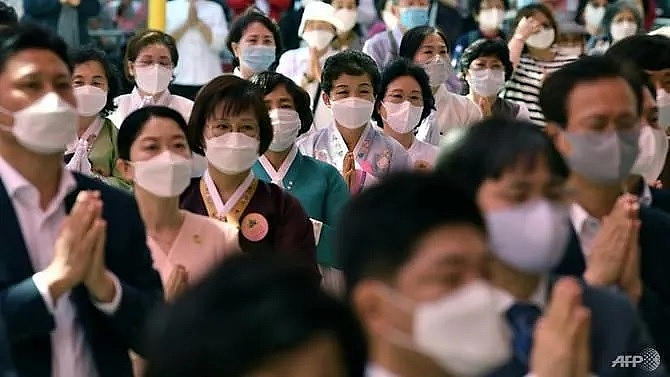South Korea reports 46 new COVID-19 cases as it tackles 'second wave'
 |
| Life in South Korea has largely been returning to normal with the easing of COVID-19 restrictions. (Photo: AFP/Jung Yeon-je) |
The South endured one of the worst early outbreaks of the disease outside China but appears to have brought it broadly under control thanks to an extensive "trace, test and treat" programme while never imposing a compulsory lockdown.
Social distancing rules were relaxed after a public holiday in early May and the country has since been returning largely to normal.
But in the last month the South has seen around 35 to 50 cases a day, mostly in the Seoul metropolitan area where half of the population lives.
"We believe the second wave has been running since it was triggered by the May holiday," said Jung Eun-kyeong, director of Korea's Centers for Disease Control and Prevention.
Officials reimposed some social distancing measures in late May following fresh clusters in and near Seoul, and most cases reported in the past week have been domestic infections.
Of the 46 new cases reported Tuesday - taking the country's total to 12,484 - 30 were people arriving from overseas.
Seoul Mayor Park Won-soon warned on Monday that the capital would have to go back to strict social distancing measures if the number of infections in the city topped 30 on each of the next three days. On Tuesday, six were announced.
If the capital failed to tackle the current trend in transmission, the daily case count could reach "about 800" in a month's time, he said.
South Korean President Moon Jae-in said Tuesday he is "confident" the virus "still can be controlled".
"What has been discovered in the past five months is that you can prevent virus infections as long as you follow the basic disinfection rules and the government's guidelines," he said.
What the stars mean:
★ Poor ★ ★ Promising ★★★ Good ★★★★ Very good ★★★★★ Exceptional
 Tag:
Tag:
Themes: COVID-19
- 67 million children missed out on vaccines because of Covid: UNICEF
- Vietnam records 305 COVID-19 cases on October 30
- 671 new COVID-19 cases recorded on October 1
- Vietnam logs additional 2,287 COVID-19 cases on Sept. 21
- People’s support decisive to vaccination coverage expansion: official
Related Contents
Latest News
More News
- 72 nations sign landmark Hanoi cybercrime convention (October 26, 2025 | 18:00)
- UN Secretary-General commends Vietnam’s global leadership (October 26, 2025 | 09:00)
- APEC finance ministers convene to tackle regional challenges (October 22, 2025 | 17:31)
- Rewiring global trade: ASEAN’s rise as supply chain hub (October 17, 2025 | 11:40)
- Vietnam attends first World Nuclear Week Forum in Russia (September 26, 2025 | 10:50)
- Vietnam attends 69th session of IAEA General Conference (September 16, 2025 | 10:00)
- ADB, WB pledge over 12 billion USD for ASEAN power grid, renewable energy projects (August 15, 2025 | 14:18)
- Lowy Institute proposes AI-based tobacco control solutions for ASEAN (August 15, 2025 | 14:14)
- Cloud computing policy to position Malaysia as regional hub by 2030 (August 15, 2025 | 14:11)
- Thailand, Cambodia suffer numerous cyber attacks (August 05, 2025 | 16:19)























 Mobile Version
Mobile Version